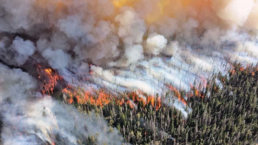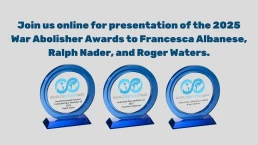Documents shed light on the earliest-known instance of climate science funded by the fossil fuel industry, adding to growing understanding of Big Oil’s knowledge of climate change.
by Rebecca John, DeSmog
In 1955 in the wilds of Big Sur, a young Caltech researcher named Charles David Keeling gathered carbon dioxide samples among Northern California’s towering redwoods. Crawling out of his sleeping bag several times a night on research trips conducted over the course of 18 months, from January 1955 to June 1956, Keeling measured background levels of carbon dioxide across the western United States — at Big Sur, but also at desert and high mountain stations, in forests and grassland, above the city of Los Angeles, and over the waters of the Pacific Ocean.
Keeling’s findings would lead him to conduct a separate series of experiments from the top of the Hawaiian volcano Mauna Loa resulting in the famous Keeling Curve — a visual depiction of rising atmospheric carbon dioxide (CO2) caused by the burning of fossil fuels. His work underpins our understanding of manmade climate change.

Unknown until now, however, is the fact that Keeling’s earliest research into carbon dioxide across the western U.S. was funded in part by the fossil fuel industry via a private foundation — and that in 1954 this foundation was informed of the potential impact of manmade carbon dioxide emissions on both the climate and human civilization.
Newly discovered documents affirm that the automobile and petroleum industries funded early climate science Keeling conducted at the California Institute of Technology (Caltech) between 1954 and 1956. Records show that “oil and auto companies” sponsored the scientist’s research via an organization called the Southern California Air Pollution Foundation, formed in 1953 to tackle Los Angeles’s infamous smog. American Motors, Chrysler, Ford, and General Motors were among 18 automotive companies that gave money to the foundation.
Recent Posts
Politicians Are Betraying Gen Z On Climate
July 10, 2025
Take Action Now While Gen-Zers thrift, knit, crochet, and find other ways to reduce our footprints, Trump and the GOP are greenlighting more climate…
Trump’s Deportation Threat Against Zohran Mamdani Is Shameful
July 10, 2025
Take Action Now In only half a year of Donald Trump’s presidency, he and his allies have turned deportation into an explicitly political threat…
Teachers Union Votes To Cut Ties To The Anti-Defamation League
July 10, 2025
Take Action Now In a momentous vote, the National Education Association voted to cut all ties with the Anti-Defamation League. The reason? “Despite…
2025 War Abolisher Awards Go To Albanese, Nader, Waters
July 9, 2025
Take Action Now The purpose of the awards is to honor and encourage support for those working to abolish the institution of war itself.By World…




